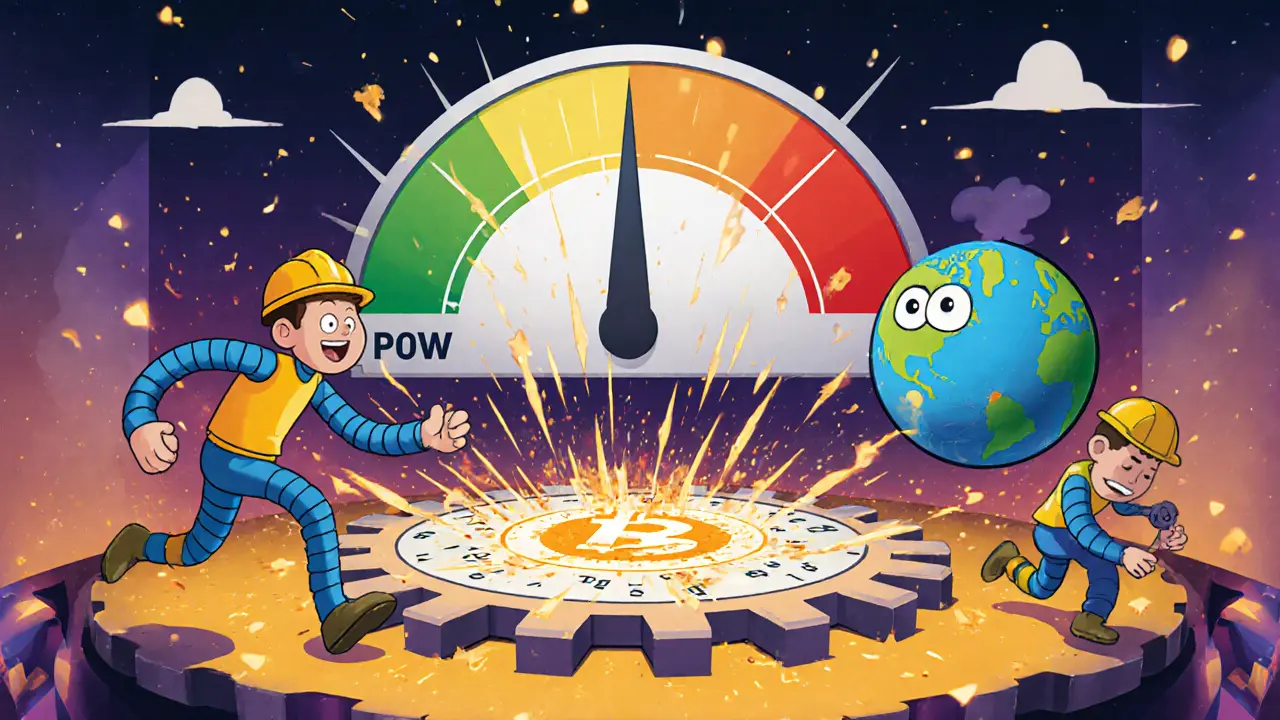Proof of Stake: How It Secures Blockchains and Why It Matters
When you hear Proof of Stake, a consensus mechanism that lets cryptocurrency networks validate transactions using staked coins instead of energy-hungry mining. Also known as PoS, it’s the backbone of Ethereum, Solana, and dozens of other blockchains today. Unlike Bitcoin’s old-school mining, where computers race to solve math puzzles, Proof of Stake picks validators based on how much crypto they lock up — or "stake" — in the network. The more you stake, the higher your chance of being chosen to verify the next block. And if you do it right, you earn rewards. Simple. Efficient. Clean.
But it’s not all rewards and easy money. Validator slashing, a penalty system that takes away part of your staked coins if you act dishonestly or go offline is the stick that keeps everyone honest. If you sign two different blocks at the same time — a move called double signing — or your validator node crashes too often, you lose a chunk of your stake. This isn’t a bug; it’s the whole point. Slashing makes attacking the network expensive and risky. That’s why Proof of Stake networks are more secure than you think: they turn greed into a defense mechanism.
And then there’s Ethereum staking, the real-world shift that turned Ethereum from a mining-heavy chain into a green, scalable system. After the Merge in 2022, Ethereum stopped using proof of work entirely. Millions of dollars worth of ETH got locked up by everyday users running validators. Some ran them on home computers. Others used services like Lido or Coinbase. Either way, they helped secure the network and got paid for it. That’s the power of Proof of Stake: it lets regular people participate in keeping the blockchain alive — no GPU farm needed.
Proof of Stake isn’t perfect. Centralization risks exist when big players hold most of the stake. Technical errors can lead to slashing. And if you’re new, it’s easy to mess up your setup and lose money. But the core idea? Brilliant. It replaces brute force with economic incentives. It turns passive holdings into active security. And it’s the reason crypto can scale without burning the planet.
Below, you’ll find real guides on how to protect your staked assets, avoid slashing traps, and understand what’s really happening behind the scenes. No fluff. Just what works — and what gets you penalized.
Proof of Stake uses 99.95% less energy than Proof of Work, making it the most sustainable blockchain consensus model. Ethereum's 2022 switch slashed its power use from gigawatts to megawatts, setting a new standard for the industry.
Discover the top Proof of Stake cryptocurrencies in 2025, including Ethereum, Solana, and Cardano, with real staking yields, entry requirements, and what makes each one worth your attention.
Learn how blockchain consensus mechanisms like Proof of Work, Proof of Stake, PBFT, and DPoS keep decentralized networks secure and in sync. Understand their trade-offs in speed, energy use, and decentralization.
The Ethereum difficulty bomb was a hidden timer designed to force the network’s switch from energy-heavy mining to Proof of Stake. It worked-by making mining so slow and expensive that change became unavoidable.



